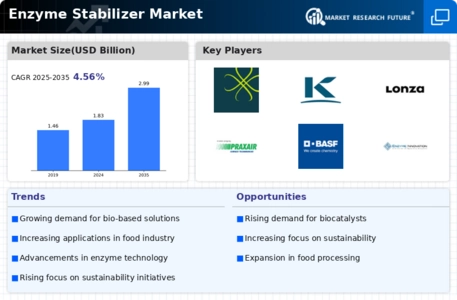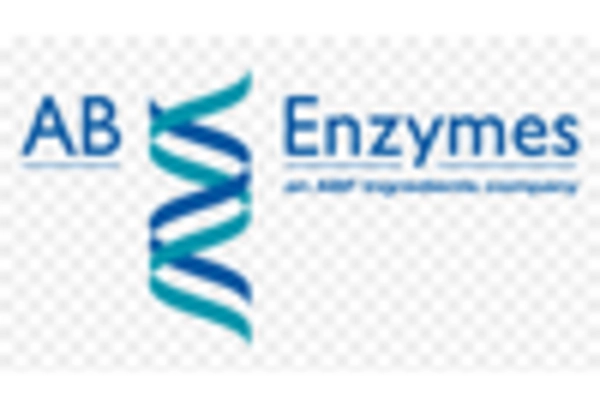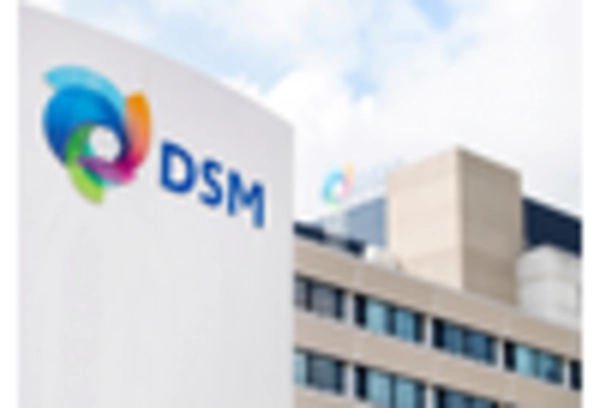Advancements in Biotechnology
Technological innovations in biotechnology are reshaping the Enzyme Stabilizer Market. The development of novel enzyme formulations and stabilization techniques has led to enhanced performance and efficiency in various applications. For instance, the introduction of genetically engineered enzymes has improved stability and activity under diverse conditions, making them more appealing to manufacturers. The biotechnology sector is expected to witness substantial growth, with projections indicating a market size exceeding 700 billion by 2026. This growth is likely to stimulate further investment in enzyme stabilizers, as companies seek to leverage these advancements to enhance product offerings and maintain competitive advantage.
Regulatory Support for Enzyme Use
Regulatory frameworks are increasingly supportive of enzyme applications, which is beneficial for the Enzyme Stabilizer Market. Governments and regulatory bodies are recognizing the advantages of enzymes in various sectors, including agriculture, food, and pharmaceuticals. This support is reflected in the establishment of guidelines that promote the safe use of enzymes, thereby encouraging manufacturers to adopt enzyme stabilizers in their products. As regulations evolve to favor sustainable practices, the demand for enzyme stabilizers is expected to rise, fostering growth within the Enzyme Stabilizer Market. This trend indicates a positive outlook for stakeholders involved in enzyme production and application.
Rising Demand for Biodegradable Products
The increasing consumer preference for biodegradable products is driving the Enzyme Stabilizer Market. As industries seek to align with sustainability goals, enzyme stabilizers are becoming essential in the formulation of eco-friendly products. This trend is particularly evident in sectors such as detergents and personal care, where enzyme stabilizers enhance product efficacy while reducing environmental impact. The market for biodegradable products is projected to grow significantly, with estimates suggesting a compound annual growth rate of over 10% in the coming years. Consequently, manufacturers are investing in enzyme stabilizers to meet this rising demand, thereby propelling the Enzyme Stabilizer Market forward.
Growing Awareness of Health and Nutrition
The rising awareness of health and nutrition among consumers is influencing the Enzyme Stabilizer Market. As individuals become more health-conscious, there is an increasing demand for products that are not only effective but also safe and beneficial. Enzyme stabilizers are being recognized for their role in enhancing the nutritional value of food products, which is particularly relevant in the dietary supplement and functional food sectors. The market for functional foods is projected to grow significantly, with estimates suggesting a value of over 275 billion by 2025. This growing awareness is likely to drive the adoption of enzyme stabilizers, thereby contributing to the expansion of the Enzyme Stabilizer Market.
Increasing Applications in Food and Beverage Industry
The food and beverage sector is experiencing a surge in the utilization of enzyme stabilizers, significantly impacting the Enzyme Stabilizer Market. Enzymes play a crucial role in improving food quality, extending shelf life, and enhancing flavor profiles. The Enzyme Stabilizer Market is anticipated to reach approximately 3 billion by 2025, with enzyme stabilizers being a key component in this growth. As consumer preferences shift towards healthier and more natural food options, manufacturers are increasingly incorporating enzyme stabilizers to meet these demands. This trend is likely to continue, further driving the growth of the Enzyme Stabilizer Market.


















Leave a Comment